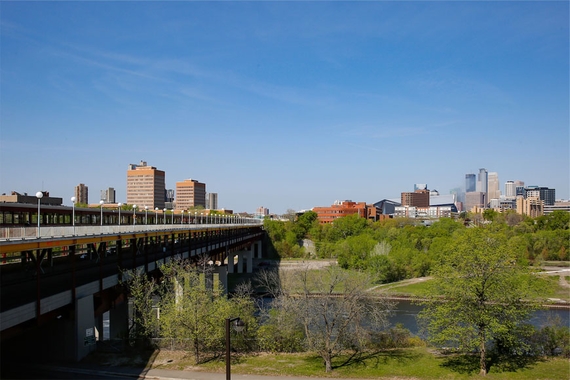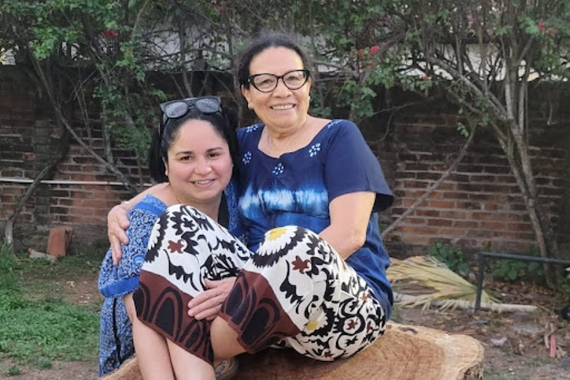Andre Kobayashi Deckrow: Putting Local History into Global Contexts
Andre Kobayashi Deckrow, a postdoctoral associate in public history, seeks to highlight immigrant perspectives through his teaching, research, and community partnerships. “My hope is that through my work, we might gain a greater understanding of the diverse experiences and cultures of marginalized people,” he says.
What roles do you have at the University of Minnesota? How have they fostered your academic growth?
I am currently a postdoctoral associate in the Program in Heritage Studies & Public History (HSPH) and the Department of History. As a public historian and scholar of global migration, the University of Minnesota and the HSPH program have been ideal places to train as a junior scholar. They have given me the space to build and lead community partnerships that work directly with immigrant populations and underserved groups in Minnesota. I have also built my skills as a teacher, leading project-based courses for both undergraduate and graduate students in public history. Community-engaged history not only fosters student learning and growth but also highlights the important role the University of Minnesota can play in supporting the community.
I also direct the academic side of the history department’s History Day mentor program that is run in partnership with the Minnesota Historical Society (MNHS). This unique program pays U of M undergraduates to visit classrooms in the metro area where they help middle and high schoolers with their National History Day projects. The program gives mentors a chance to help young students in the classroom while developing their own historical thinking skills. Over the past couple of years, I used the program to introduce students to aspects of public history by taking advantage of our partnership with MNHS, one of the leading public history institutions in the country. Students have been able to visit MNHS sites and learn directly from experts about their work and what aspects of their work might help young students develop their History Day projects.
My experiences as a teacher, scholar, and public historian at the University of Minnesota have been tremendously beneficial to my career development and given me the confidence to continue pursuing community-engaged public history wherever my academic journey takes me next.
What are your areas of specialty?
My current book project examines Japanese migration to Brazil in the 1920s and ‘30s. Today, the largest Japanese population outside of Japan lives in Brazil. This is the legacy of a large-scale Japanese government-sponsored program to settle Japanese farmers in rural São Paulo before World War II. My research uses archival sources in Japanese, Portuguese, and English to analyze why and how so many Japanese ended up settling in Brazil within the context of modern Japanese, Brazilian, and global history. Through my research in Japan, Brazil, and the United States, I seek to identify the complex factors that motivated and shaped pre-World War II Japanese agricultural migration to Brazil. I consider myself a scholar of global migration. This spring I am teaching an undergraduate course on migrations in modern global history that looks at the history of human movement around the world. As part of this class, students also learn about immigration to Minnesota. Class visits to places like the Immigration History Research Center Archives and the Hmong Cultural Center Museum teach students to put local history in global contexts.
My work in global migration history also directly informs my work in public history, where my community-engaged projects seek to tell immigrant histories in Minnesota. I've developed partnerships with the Hmong Cultural Center Museum—the first dedicated historical and cultural space for Hmong Americans in the United States—for students to develop digital exhibitions and curricula to help visiting school groups. I partner with the UMN Libraries and the new Liberal Arts Engagement Hub to build community archives and preserve the Museum's collections of Hmong newspapers. I've also been developing a partnership with local leaders and the University of Minnesota-Crookston to highlight untold histories in Crookston through public exhibitions and monuments. Having a scholarly understanding of global migration is particularly useful when facilitating student work on these projects, as it helps students recognize the global patterns and structures that often define immigrant experience.
How did you become interested in what you study and teach?
Being of mixed-race and the child of an immigrant, the experience of migration has long been at the center of my identity. I remember being in elementary school and having to translate for my mother at the store or a restaurant in a way that made me keenly aware of the hardships that immigrants and non-native speakers of English face. These experiences ultimately led me to examine global migration in a scholarly way. It was on my first trip to Brazil—where I first experienced the feelings of being part of a global diaspora—that I became interested in researching the history of Japanese migration to Brazil. I also think this experience really drives my work as a public historian, as I see my role as being equal parts historian and community organizer. In my community-engaged projects, I seek to facilitate the telling of history by communities and groups that often lack the resources or space to present and preserve their own histories. My hope is that through my work, especially by working with immigrant communities in Minnesota, we might gain a greater understanding of the diverse experiences and cultures of marginalized people while also helping them develop a greater sense of belonging in their community.
What are some takeaways students will get from your courses?
One of the important things that I hope students gain from my teaching is an understanding of the ways in which global phenomena influence local experiences and the ways that local experiences can also have global effects. As a teacher, one of my greatest joys is introducing students to new worlds and cultures, and in my classroom that might mean teaching students about places as far away as Japan or Brazil or as close to campus as Lake Street or Frogtown. Through field trips to local historical institutions and community-engaged public history projects, my students come away from my class with a greater understanding of both their place in the world and the richness of life in the Twin Cities, a place that many of them are experiencing for the first time. Not only do students learn to think critically about the world, they also learn how to be informed and active citizens in their communities.
What are you most excited about right now?
While I'm mostly looking forward to the weather getting warmer and enjoying the Minnesota summer, I'm very excited about seeing the community partnerships that I lead grow and blossom. Seeing the results of these efforts—especially the work of my students—in public exhibitions and public events is an immensely rewarding feeling. I am very fortunate that the U of M and the HSPH program have given me the space and freedom to build my very own community partnerships, something that's so rare for junior scholars. CLA's commitment to community engagement, in particular, and rethinking the ways that the University can be a positive force in the community have very much guided my path as a scholar and I'm excited to bring this ethical commitment to wherever I go next.


